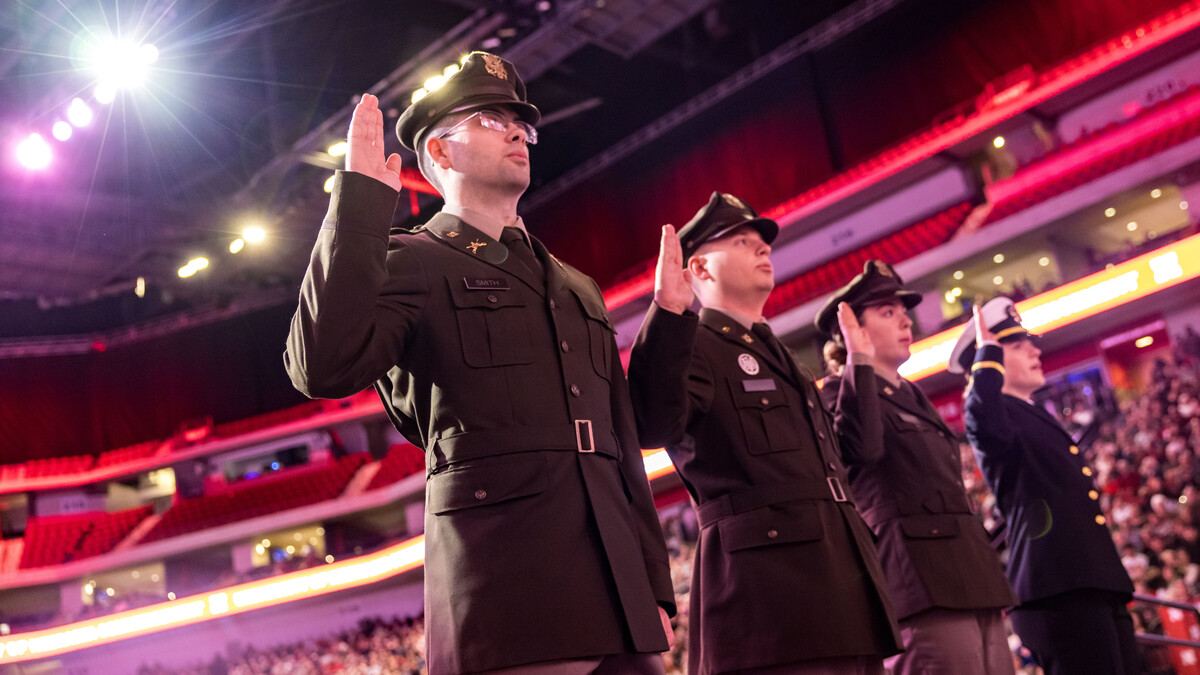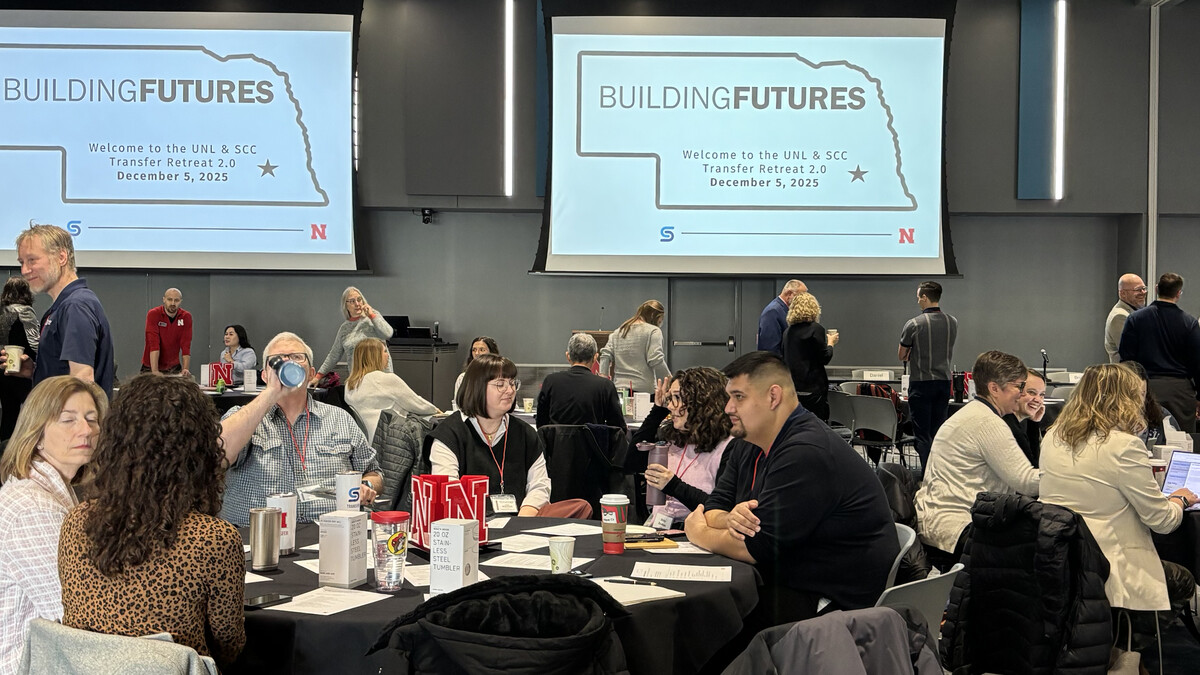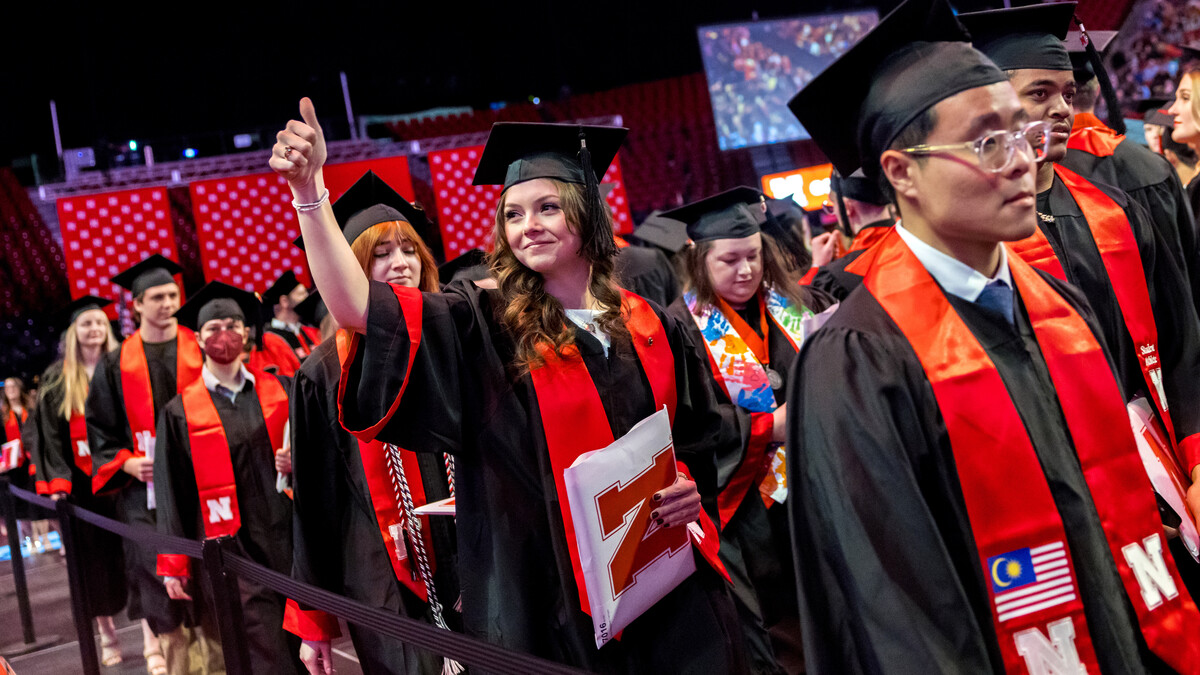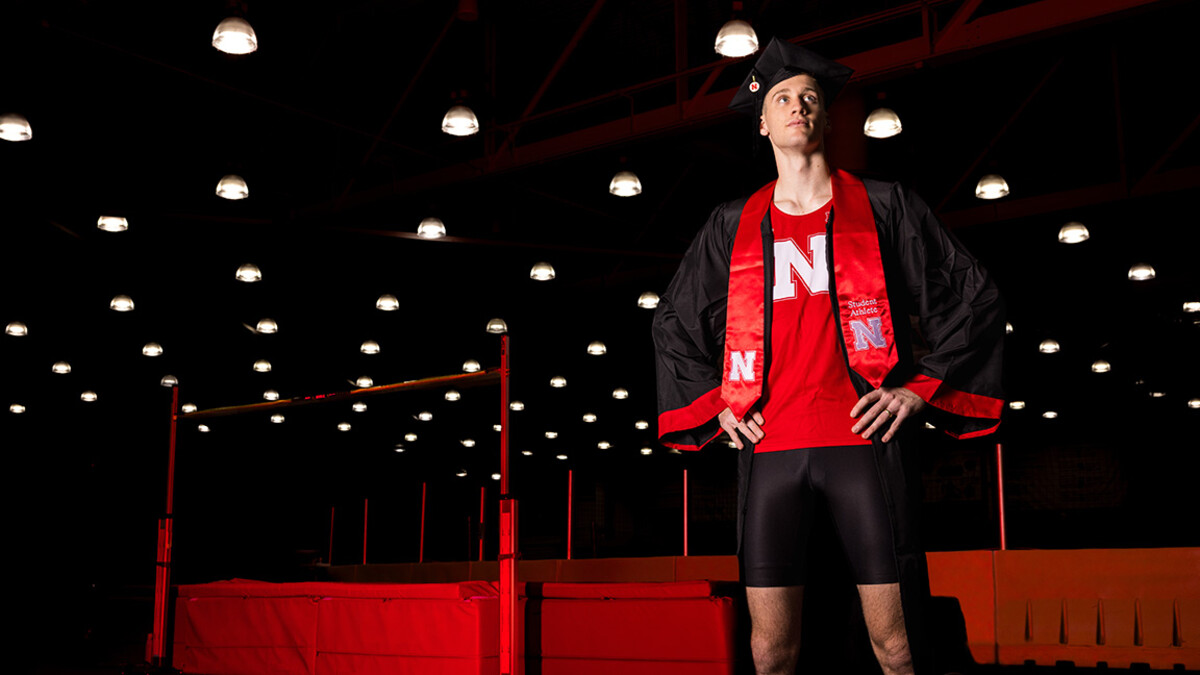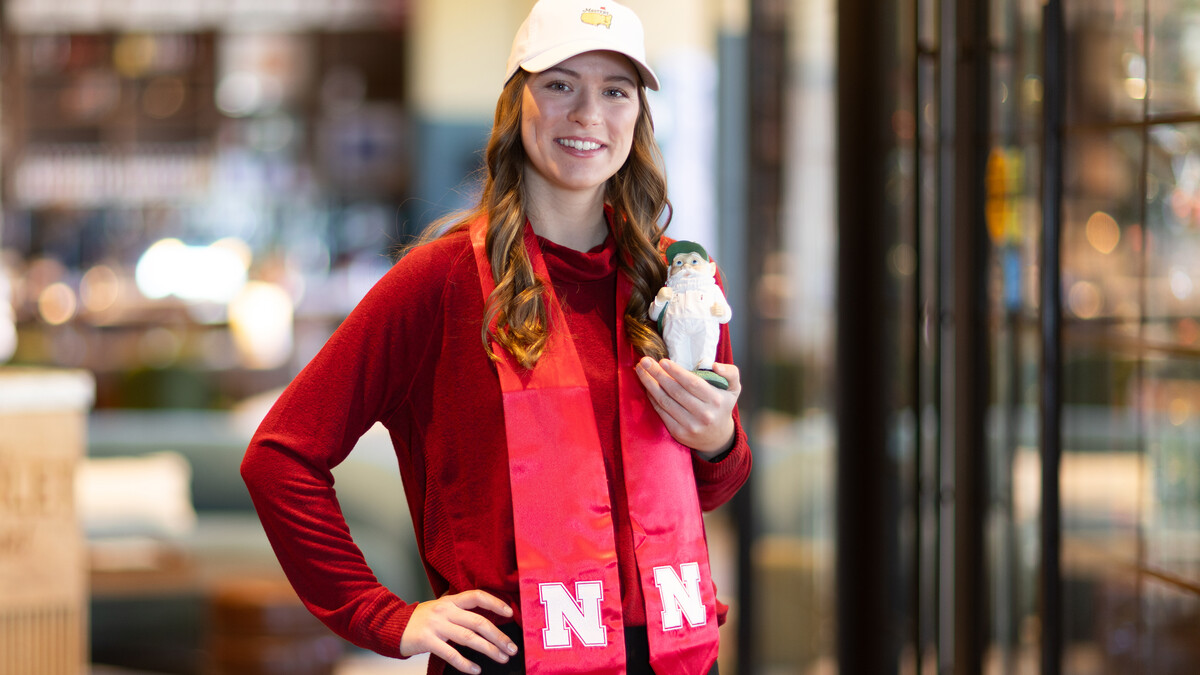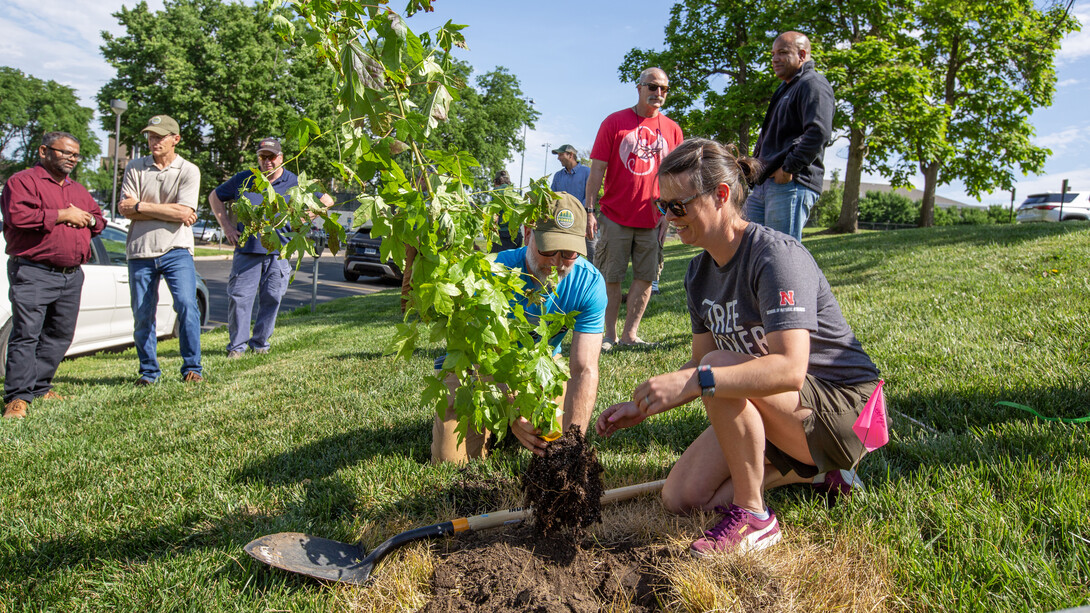
The University of Nebraska–Lincoln’s newest tree may just be the best-traveled member of the East Campus community. The sweetgum tree, planted June 4, spent 25 days in space with NASA’s Artemis I mission during its time as a seed.
Ann Powers, lecturer in regional and community forestry, addressed a crowd of about 30 spectators from a sloped area of turf just east of Hardin Hall and described the Moon Tree’s journey, as well as plans for its future.
An average sweetgum seed, Powers said, rides the wind for about 200 feet before it germinates. This sweetgum, affectionately called “Luna,” traveled about 1.3 million miles and completed three orbits around the moon.
Powers said she will eventually use the tree to introduce her students to concepts such as seed dispersal, tree growth rates and changes in climate. Luna’s seed came from a mature sweetgum in central Louisiana, where its ancestors faced much milder winter conditions than Luna likely will in Nebraska.
The planting is an expansion of the “Moon Tree” project that sprouted from the Apollo 14 mission in 1971. That crew included astronaut and command module pilot Stuart Roosa, a former U.S. Forest Service smoke jumper, who carried 500 tree seeds to the moon. Upon Apollo 14’s return, the seeds became gifts — the majority presented as part of the nation’s 1976 bicentennial celebration — to be grown at national monuments, in communities and in nations around the world.
Some 50 years later, NASA and the Forest Service teamed up again to launch a second Moon Tree project in celebration of the nation’s goal of returning astronauts to the moon and beyond with the Orion spacecraft and Artemis missions.
When Powers’ husband, Marcus (a UNL and Nebraska Law alumnus, and co-founder of Lincoln’s Zipline Brewing), mentioned that the Forest Service was once again offering Moon Trees, she gravitated toward the chance to bring one to campus.
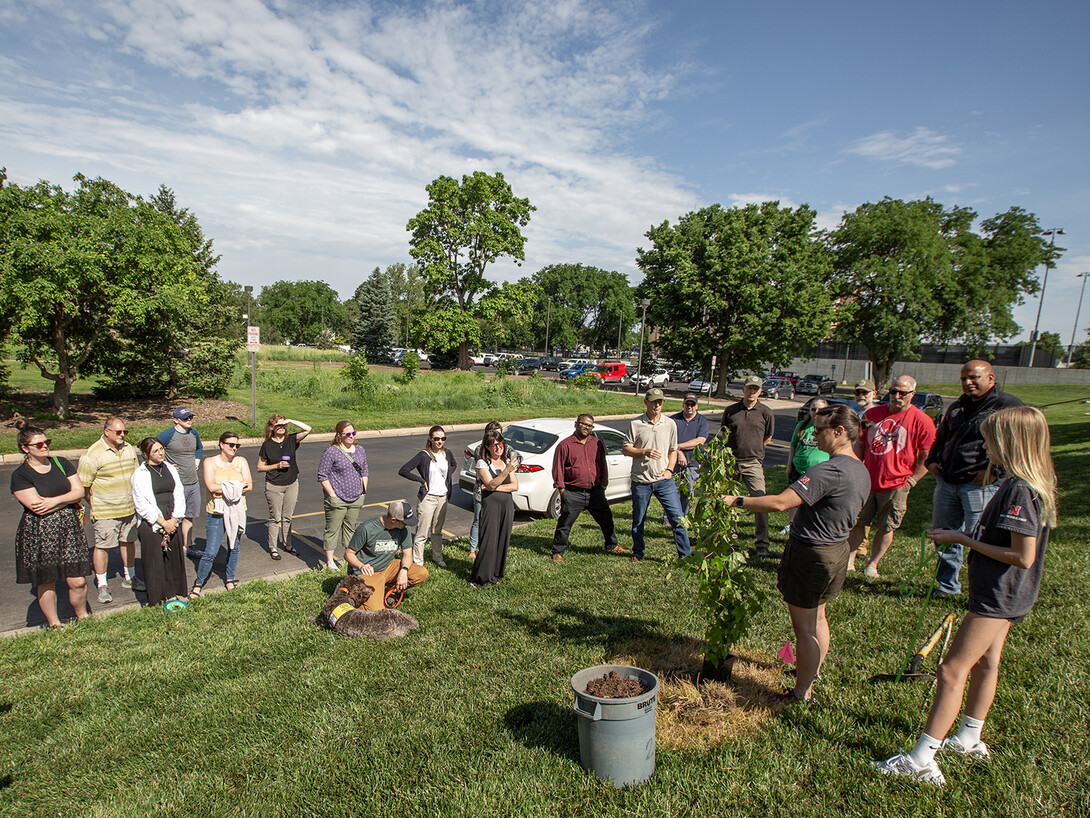
The Department of Biological Systems Engineering plans to monitor the tree as it grows. Santosh Pitla, associate professor of advanced machinery systems, worked with Powers to apply for the Moon Tree.
His team will collect soil data and measure how well the tree grows and photosynthesizes compared to established sweetgums nearby.
“It has experienced a lot of gravity effects,” he said, “There are many earth-bound sweetgum trees; we could look at their growth rates and look at the growth rates of this [one].”
According to NASA, 1,000 seeds went into space in late 2022 on an unmanned Orion spacecraft. The mission brought them within 80 miles of the moon’s surface, Powers said. In addition to sweetgums, Douglas fir, loblolly pine, American sycamore and giant sequoia seeds made the journey.
The sweetgum and sycamore seeds eventually sprouted under the care of the U.S. Forest Service at Charles E. Bessey Tree Nursery in Halsey, Nebraska. The nursery, named after the founder of UNL’s original forestry program, tended to the young trees for about a year before sending them to Moon Tree custodians around the country.
For Powers, continuing the university’s forestry legacy while branching out into new frontiers has been equal parts exciting and surprising.
“I didn’t think that my job studying trees and talking about trees would ever lead me to space,” Powers said. “It’s really interesting to see those connections that we have all over campus.”




